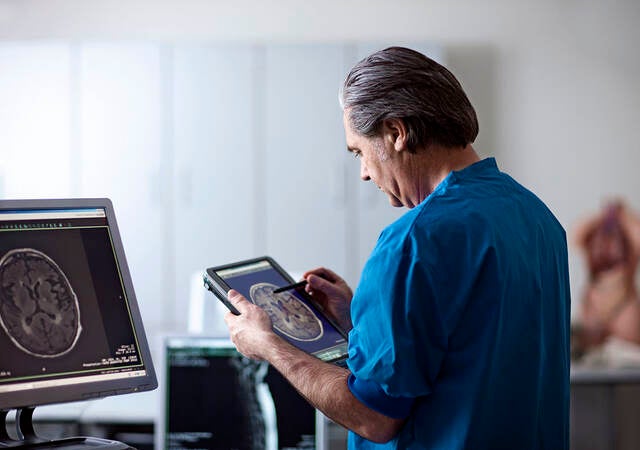July 28, 2021
The British authority for medical products, MHRA, has published its Delivery Plan 2021-2023. Normally MHRA publishes a new Delivery Plan every five years, and the most recent version was from 2018. There are two main reasons for introducing this new policy two years earlier than expected:
- Brexit: with the UK no longer part of the EU Single Market, the MHRA is no longer part of the EU network of Competent Authorities. The UK must also develop its own legislation as the EU Regulations do not apply there. This need to develop a new role is also an opportunity, and the new Delivery Plan recognizes this.
- The conclusions and recommendations from the Independent Medicines and Medical Devices Safety Review, First Do No Harm, led by Baroness Julia Cumberledge: this report examines why patients suffer from avoidable harm in the British healthcare system. Although some of the causes are specifically related to the British system, there are many lessons that can be learned globally. These are summarized in eight recommendations. Recommendations 6 and 7 of this report specifically address aspects related to medical devices: reporting and evaluation of incidents and data concerning implants. The Delivery Plan refers to this report and many of the recommendations can be recognized.
However, the key conclusion of the Cumberledge Report is a structural failure to listen to and respond to patients. The Delivery Plan is an attempt to give the patient a stronger role in their healthcare
MHRA funding and patient data
The MHRA will be mainly funded by fees and selling services; only a minority of its funds will come from the Department of Health and Social Care. These additional funds will go to specific activities related to medical devices and to scientific research. Most of the funding will come from companies that conduct clinical studies with medical devices, or trials with pharmaceutical products.
MHRA may have something interesting on offer for these companies. By combining patient data from the National Health Service (NHS) (including anonymized GP data), it will be possible to perform rapid patient enrollment into studies and setup studies that compare an intervention with a stratified patient group that is not directly included in the study.
This ambition can also be seen in the recently published UK government’s “Life Sciences Vision” document. Without further details it is not possible to see how this can be done while respecting data privacy of patients in ways that are similar to the safeguards provided by the EU General Data Protection Regulation, or GDPR. It is easy to see how this would be very attractive for all sort of studies with drugs or devices.
But, it appears the UK patient population will be turned into study subjects without proper informed consent. One should therefore carefully consider the acceptability of these data for demonstration of compliance under the EU Medical Devices Regulation (MDR) and In-vitro Medical Devices Regulation (IVDR) because of possible differences in ethical standards.
The plan gives some background on the conditions of the total budget: The annual budget must be balanced each year. It will no longer be possible to carry reserves from one year the next. Of course there may be some creative bookkeeping going on each December and January, but it may be very difficult to manage long term investments.
Putting the patient first
The first deliverable of this Delivery Plan is to increase patient and public involvement, and putting the patient first. A promising objective is to develop the use of patient-reported outcome measures of clinical trials and studies. If done well this could be a powerful tool to reduce the risk of introducing interventions with insufficient results or unacceptable side-effects. MHRA also wants to get patients involved in the process of licensing new drugs. This too is very interesting, although it is also obvious that it may in some case be difficult to clearly define who will be that patient and how they will have their voice heard. This can for example be challenging if patient representation groups are mainly funded by industry.
Reporting on medical devices safety issues will also be made more responsive. This will probably also result in a system that allows for easier access. Obviously, if this is successful, it may generate a lot of signals, and managing this will be complex and therefore costly. It is likely this system will be kept easily accessible by not introducing fees to fund it. It will be challenging to balance the quality of the reporting system within a given budget.
Leading role in medical science
The UK has a global reputation regarding medical science. The ambition is to capitalize on that and possibly build this up even further. In order to do that, a strong network must be set up in which multiple organizations can work together. The UK must develop its own laboratory infrastructure, comparable to the EU expert and reference labs. Although this appears challenging, funding may come from the volume of work anticipated from studies and trials.
It is not certain how this ambition will be impacted by Brexit. On the one hand industry may look for larger markets where it is easier to set up multi-center studies with specialized centers. EU students can no longer use the Erasmus program to study in the UK, and there are significant limitations to the freedom of movement of people that further discourage them to spend time there. On the other hand, UK universities may be easier to access for non-EU students now. Also, the availability of a good patient data network may help attract companies to run studies in the UK. It may take several years before it becomes clear which of these effects will get the upper hand.
New legislation for medical devices and IVDs in the UK
In 2021 new UK legislation for medical devices and IVDs is expected to be introduced. This legislation will support the UK Conformity Assessed (UKCA) marking. At this moment it is not clear how this legislation will relate to European rules, but it is likely the MHRA will rely on their EU experience in creating these requirements. Here too Brexit may provide an opportunity to take some bold steps and introduce new legislative concepts, but at the same time this may create an extra hurdle for manufacturers and thereby limit the availability and/or increase prices of medical devices in the UK. It is likely this legislation will have some strict rules on the use of implant registers in the UK, possibly by combining detailed patient data with devices and making this accessible for companies for their clinical data. It is possible this is where the UK may first set some new global standards.
Future risks--and rewards
The MHRA controls almost all aspects of production, distribution and use of medicines (including herbal medicines), medical devices (including IVDs) and blood components for transfusion in the UK. The MHRA is also involved in developing the new legislation. On the one hand, MHRA's scope of authority may support writing of the law with everyday realities in mind; on the other hand, one may wonder if it is such a good idea to combine lawmaking and law enforcement within one organization. Add to that all sorts of close cooperation with the NHS, the National institute for Health and Care Excellence (NICE), the Health Research Authority and many others, and it becomes clear MHRA will be a very powerful spider in the British healthcare web.
Compare that with the EU, where the European Commission sets rules for free movement of goods that have to be accepted by Member States, each of which has its own Competent Authority for market surveillance, plus its own legislation on healthcare and reimbursement rules. These many layers create bureaucracy and slow down innovation. However, with most decisions taken by a majority vote, consensus is needed. This requires negotiating on compromises, and not on power.
Instead of being just one of 28 Competent Authorities, overseen by the European Commission, the MHRA now combines these two levels of power and positions the regulator very closely to the NHS. It is easy to see that this will allow for agile, short-term responsiveness to challenges coming from a rapidly changing world. But the MHRA will have to deliver on ambitious plans, with a challenging budget. Leaving the EU may provide opportunities to take some bold steps and set a new global standard in patient safety. Brexit may also introduce a lack of checks and balances. Only time will tell how MHRA maneuvers such treacherous waters.
Additional UK medical device and IVD regulatory resources from Emergo by UL:
- UKRP and Brexit transition consulting for medical device and IVD companies
- Whitepaper: Placing medical devices and IVDs on the UK market post-Brexit
Request more information from our specialist
Thanks for your interest in our products and services. Let's collect some information so we can connect you with the right person.






